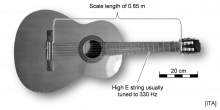Innovative Verfahren für das Recycling von textilen Bodenbelägen
Nonwovens Recycling Circular economy Technical Textiles Interior Textiles
Abstract
Im Rahmen des Projekts ist das Ziel, Chemiefasern thermochemisch zu recyceln und eine stoffliche Nutzung zu erzielen, anhand von Bodenbelägen als Beispiel. Zu diesem Zweck wird ein materialspezifischer pyrolytischer Prozess entwickelt, um die Bestandteile der Bodenbeläge zu depolymerisieren. Die gewonnenen Öle aus der Pyrolyse werden gereinigt, um Monomere zu gewinnen, die anschließend polymerisiert werden. Zum Schluss werden Filamente ausgesponnen und zu einem Nadelvliesbodenbelag verarbeitet.
Report
Einleitung:
Es wird geschätzt, dass weltweit weniger als 3 % des Materials, das zur Herstellung von Kleidung verwendet wird, zu neuen Kleidungsstücken recycelt wird. Derzeit werden in der EU-Sammelquoten für Textilabfälle auf 25 % geschätzt; aber zwischen den Mitgliedstaaten bestehen große Unterschiede. Die überarbeitete Abfallrahmenrichtlinie ((EU) 2018/851) verpflichtet die Mitgliedstaaten, bis zum 1. Januar 2025 separate Sammelsysteme für Textilabfälle einzurichten. Die Richtlinie (Artikel 11 Absatz 6) fordert auch die Kommission auf, bis Dezember 2024 die Definition von Zielen für die Wiederverwendung und das Recycling von Textilabfällen zu prüfen. Um ambitionierte Ziele für die Wiederverwendung und das Recycling von Textilien zu erreichen und ein effektives Recycling in industriellen Maßstäben zu ermöglichen, müssen sich Unternehmen in der gesamten Wertschöpfungskette, von der Faserproduktion bis zum Recycling von Textilien vorbereiten und insbesondere bei der Lösung bestehender Engpässe unterstützt werden.[1]
Textile Bodenbeläge sind ein solches Textilprodukt und werden üblicherweise aus synthetischen Fasern und Garnen, z.B. Polyamiden (PA), Polyethylenterephthalat (PET) und Polypropylen (PP) durch Weben, Tuften oder Nadeln gefertigt. Dazu werden verschiedene Komponenten kombiniert und zu Verbundstoffen verarbeitet. Thermomechanische Recyclingverfahren wie das “Regranulieren” sind für diese textilen Bodenbeläge aufgrund der Verbundstruktur nicht anwendbar. Textile Bodenbeläge werden bisher verbrannt (energetische Verwertung). Die trägt zu weiteren CO2-Emissionen und vernichtet den Werkstoff. Zusätzlich ist die deutsche Wirtschaft von einer schärfer werdenden Knappheit fossiler Rohstoffträger und Materialien wie Erdöl und Kunststoffe betroffen. Der Wechsel zu erneuerbaren und kreislauffähigen Kohlenstoffquellen auf Basis von CO2 oder Biomasse sowie Recycling bietet die Möglichkeit, die Versorgungssicherheit aufrecht zu erhalten und gleichzeitig die Umwelt zu schonen.
Problemlösung:
Ziel des Projektes ist es, polymerhaltige textile Bodenbeläge pyrolytisch zu depolymerisieren, Produktöle der Pyrolyse zu reinigen und wieder die gewonnenen Monomere zu Kunststofffasern und textilen Bodenbelägen zu verarbeiten, wie in Abbildung 1 dargestellt.
Es wird erstmalig ein Prozess für das thermo-chemische Recycling textiler Bodenbeläge mit derzeitigem Design und den Qualitäten aus Abfällen bei der beim TEER entwickelt. Dazu werden abfallstämmige textile Bodenbeläge aus Produktion sowie aus zurückgebauten Gebäuden beprobt und laboranalytisch charakterisiert. Im Anschluss werden die Materialien im halb-technischen Maßstab mittels Pyrolyse thermochemisch zersetzt. Bei der thermischen Fragmentierung des Materials entstehen Kohlenwasserstoffe, welche bei Raumtemperatur zu einem ölartigen Produkt kondensiert werden können. Aus diesen Produktölen können u. a. Caprolactam, das Monomer für PA6 sowie weitere Grundchemikalien gewonnen werden.
Durch eine Anlage im Entwicklungsmaßstab, die von der NAUE GmbH konstruiert und gefertigt wird, werden die Pyrolyseöle aufgereinigt und hochwertige, fraktionierte Vorprodukte für die Polymersynthese gewonnen. Anschließend, werden am ITA aus den identifizierten chemischen Verbindungen und Vorprodukten thermoplastische Polymere synthetisiert und daraus Filamente für die Stapelfaserherstellung ausgesponnen.
Die Stapelfasern werden schließlich zu einem Nadelvliesbodenbelag bei der FINDEISEN GmbH weiterverarbeitet und ein Demonstrator aus anteilig recycelten textilen Bodenbelägen hergestellt, um den Stoffkreislauf zu schließen.
Literatur:
[1] Europäische Kommission, Generaldirektion Binnenmarkt, Industrie, Unternehmer-tum und KMU, Duhoux, T., Maes, E., Hirschnitz-Garbers, M., et al., Study on the technical, regulatory, economic and environmental effectiveness of textile fibres re-cycling : final report, Publications Office, 2021, URL: https://data.eu-ropa.eu/doi/10.2873/828412
Contact: laura.barbet@ita.rwth-aachen.de
Institut für Textiltechnik der RWTH Aachen (ITA), Otto-Blumenthal-Str. 1, 52074 Aachen
More entries from ITA Institut für Textiltechnik der RWTH Aachen University













